When Night Unfurls its Splendour by Toby Schrapel.
TheBeaker Street Science Photography Prizeis a fascinating look at the world of science in Tasmania and the Southern Oceans.
Toby Schrapelwas the People’s Choice Winner for his photo of a biofluorescent frog sitting on a bioluminescent mushroom.
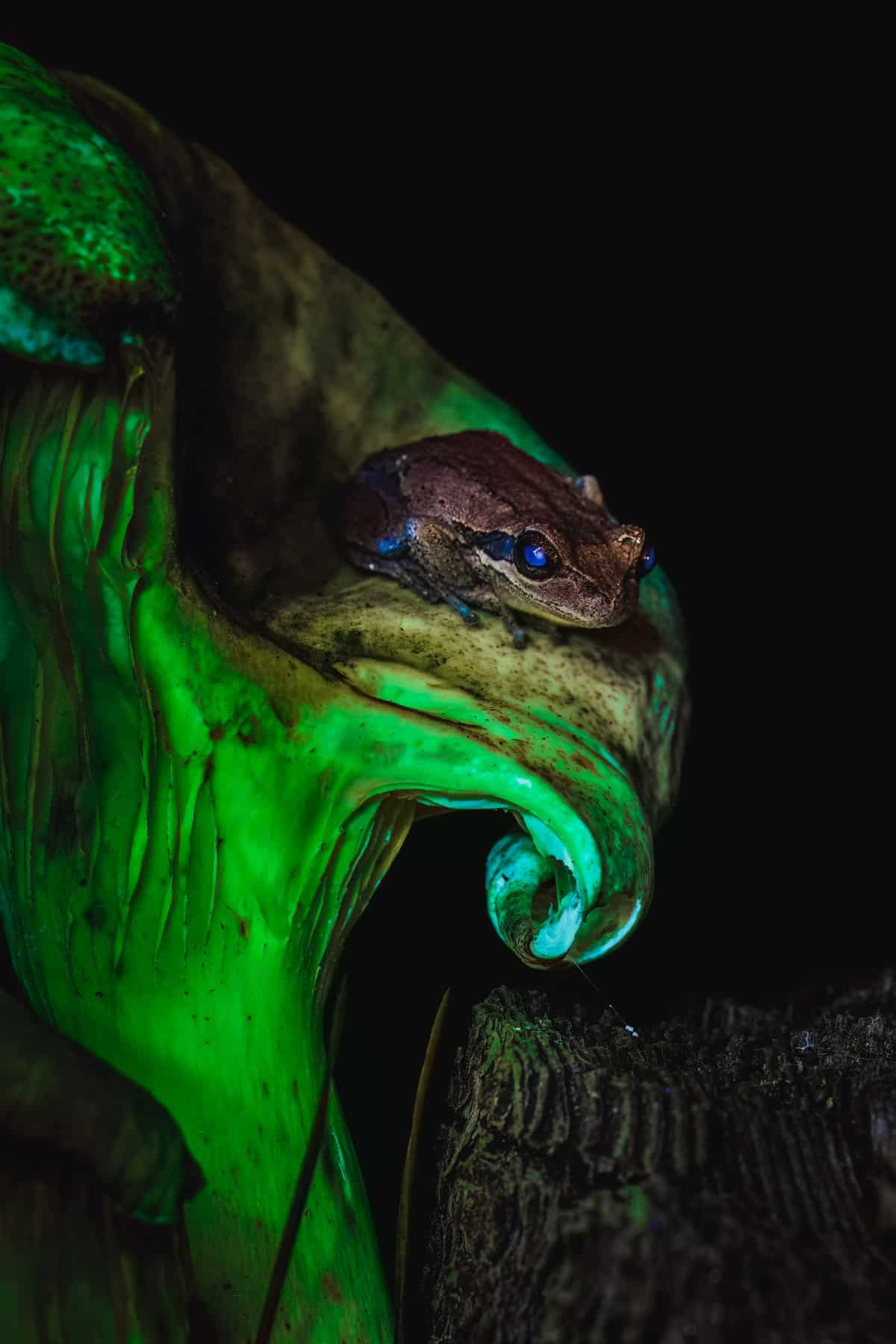
“When Night Unfurls its Splendour” by Toby Schrapel. People’s Choice Winner.“Most of you will already know that this is a bioluminescent mushroom, but did you know that the blue glow in the little frog’s eyes and on his body is another type of glow called biofluorescence? This occurs when a living organism has a chemical surface that absorbs light at one wavelength and re-emits it at another.There are many things that can fluoresce, including us. A 365 nm torch is your key to entering this magical new world full of wonderful new discoveries, all from asking just one question, “I wonder if it will glow?””
Scroll down to see more scientific photography from the contest, and prepare to be inspired.
Here are the winners of the 2024 Beaker Street Science Photography Festival.
Glimpse into the endangered red handfish’s unique beginnings.
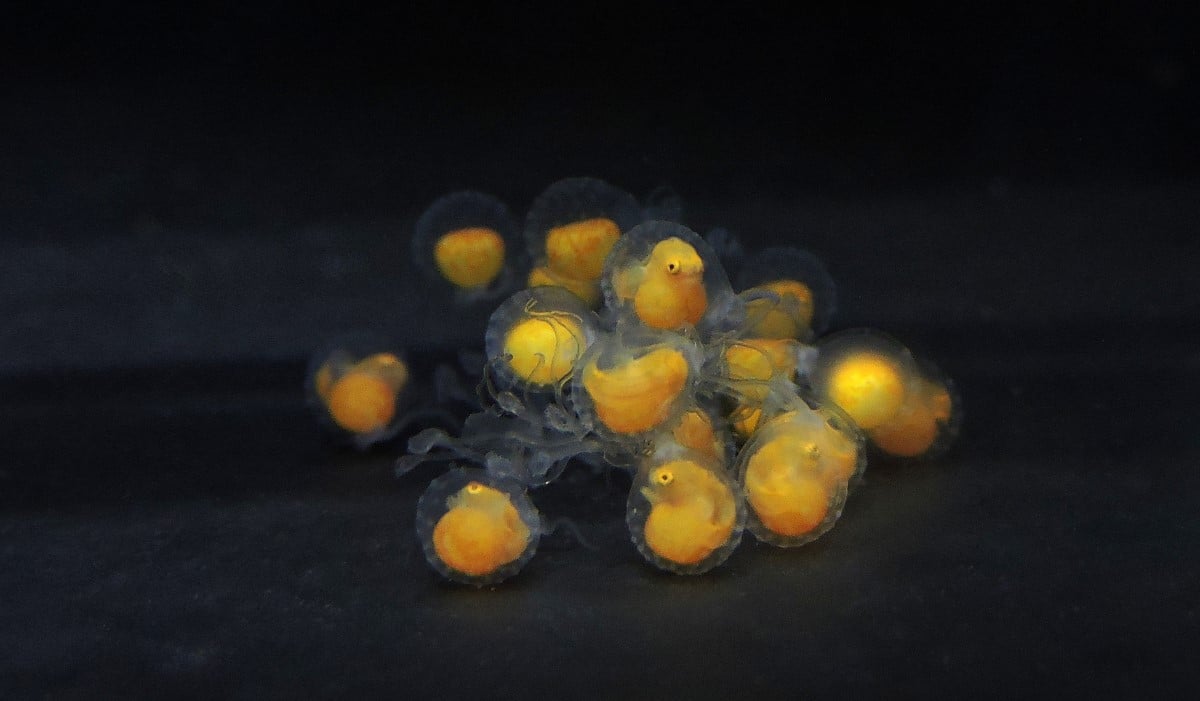
“Glimpse into the endangered red handfish’s unique beginnings.” by Andrea Williamson. Judge’s Choice Winner.“The successful development of Red Handfish (Thymichthys politus) embryos in captivity signifies a significant milestone in conservation efforts led by the Red Handfish Conservation Team at the Institute for Marine and Antarctic Studies. It demonstrates the dedication and expertise of the conservation team and offers hope for the future of this elusive species. Given the precarious situation of the Red Handfish population, with fewer than 100 adults remaining in just two small reef patches in southeastern Tasmania, efforts to preserve them in captivity are vital for their long-term survival.”
Ruby Bonnets by Charlie Chadwick.
Finalist.Ruby Bonnets, [Cruentomycena viscidocruenta], are a small species of agaric fungus.
They are part of the Mycenaceae family and often live on rotting wood.
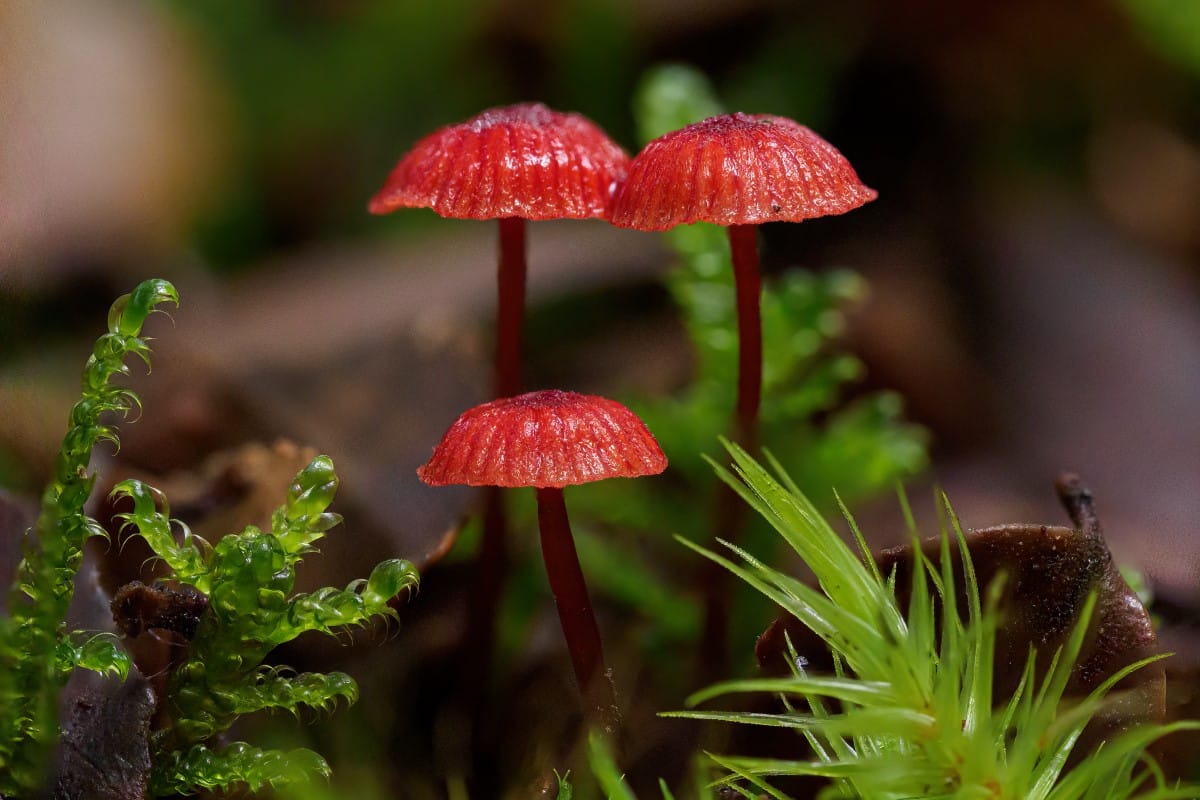
“Ruby Bonnets” by Charlie Chadwick. Finalist.“Ruby Bonnets, [Cruentomycena viscidocruenta], are a small species of agaric fungus. They are part of the Mycenaceae family and often live on rotting wood. The caps of the examples in this photo are the size of pinheads and are present in the Tasmanian rainforest. Most of the fungus is the unseen underground Mycelium. The Mycelium, united together, composes what’s called a “mycorrhizal network,” which connects individual plants together to transfer water, nitrogen, carbon, and other minerals.”
Most of the fungus is the unseen underground Mycelium.
Aurora Dreams by Carmel Gledhill.
Finalist.Auroras occur when charged particles from the Sun collide with Earth’s atmosphere.
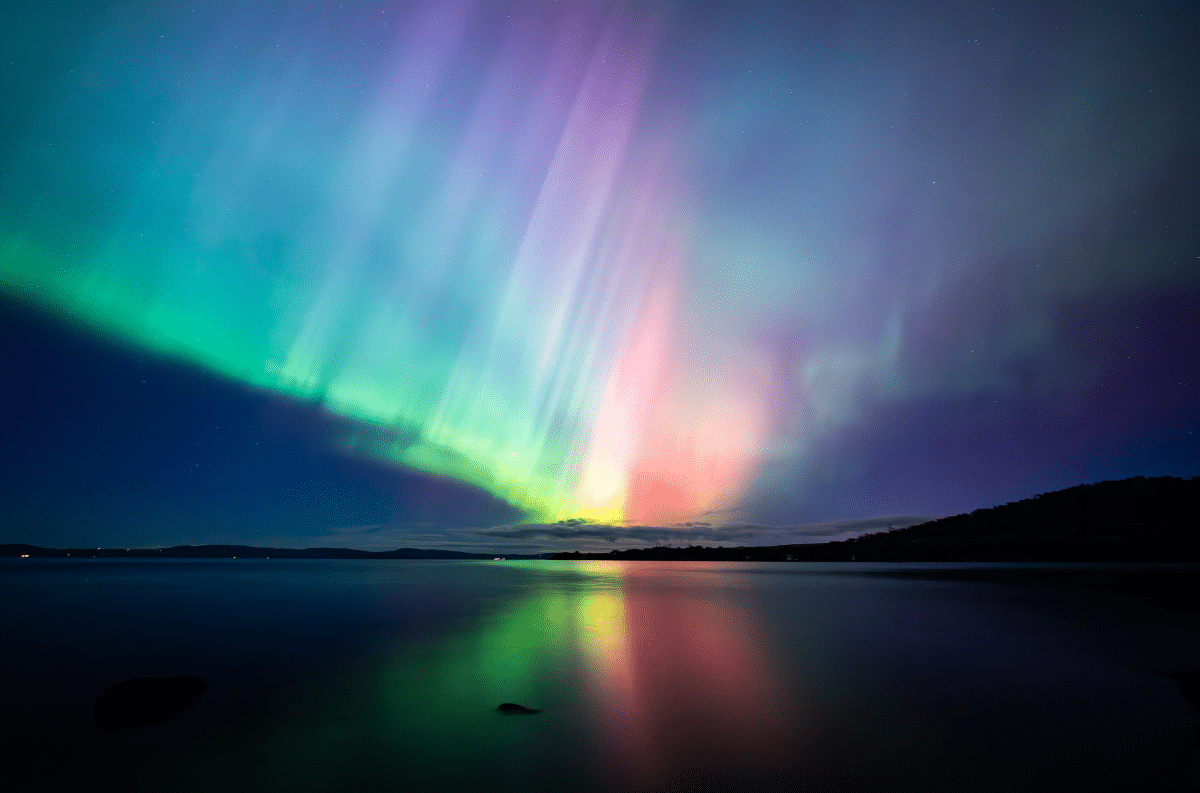
“Aurora Dreams” by Carmel Gledhill. Finalist.“Auroras occur when charged particles from the Sun collide with Earth’s atmosphere. Guided into the atmosphere and towards the poles by the Earth’s magnetic field, these particles are known as solar wind.. As they enter the atmosphere they interact with gases such as oxygen and nitrogen which induces ionization.The ionization process creates visible light with oxygen emitting green and red hues and nitrogen producing blue and purple tones. The outcome is a dynamic shimmering spectacle known as the Northern or Southern Lights which are mostly observable in proximity to the Earth’s poles. During strong solar storms however the lights can be seen much closer to the equator.”
During strong solar storms however the lights can be seen much closer to the equator.
Moments in the Mirror by James Britton.
Finalist.White-faced Heron (Egretta novaehollandiae) Tamar Valley Wetlands.
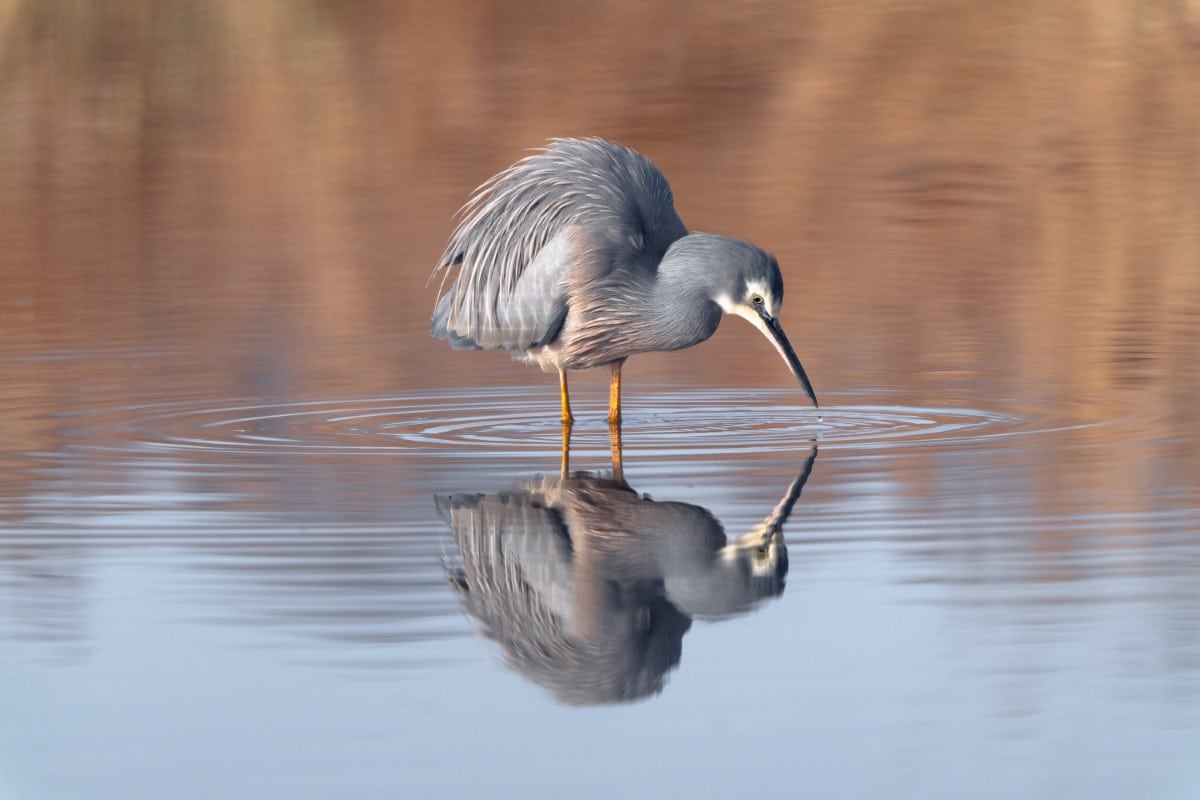
“Moments in the Mirror” by James Britton. Finalist.“White-faced Heron (Egretta novaehollandiae) Tamar Valley Wetlands. Reflection is the phenomenon where light or other forms of energy bounce off a surface and return to the observer. In the case of this photograph, light waves hitting the bird’s image on the water’s surface bounce back to our eyes, creating a mirrored representation of the bird. This occurs due to the laws of optics, specifically the angle of incidence being equal to the angle of reflection. Reflection is crucial in various scientific fields, from optics to acoustics, playing a fundamental role in understanding how waves behave when encountering different surfaces and mediums.”
Mite on bracken by Ben Travaglini.
Finalist.Mites come in a dazzling variety of forms.
Tannin Tarn by Nathan Waterhouse.
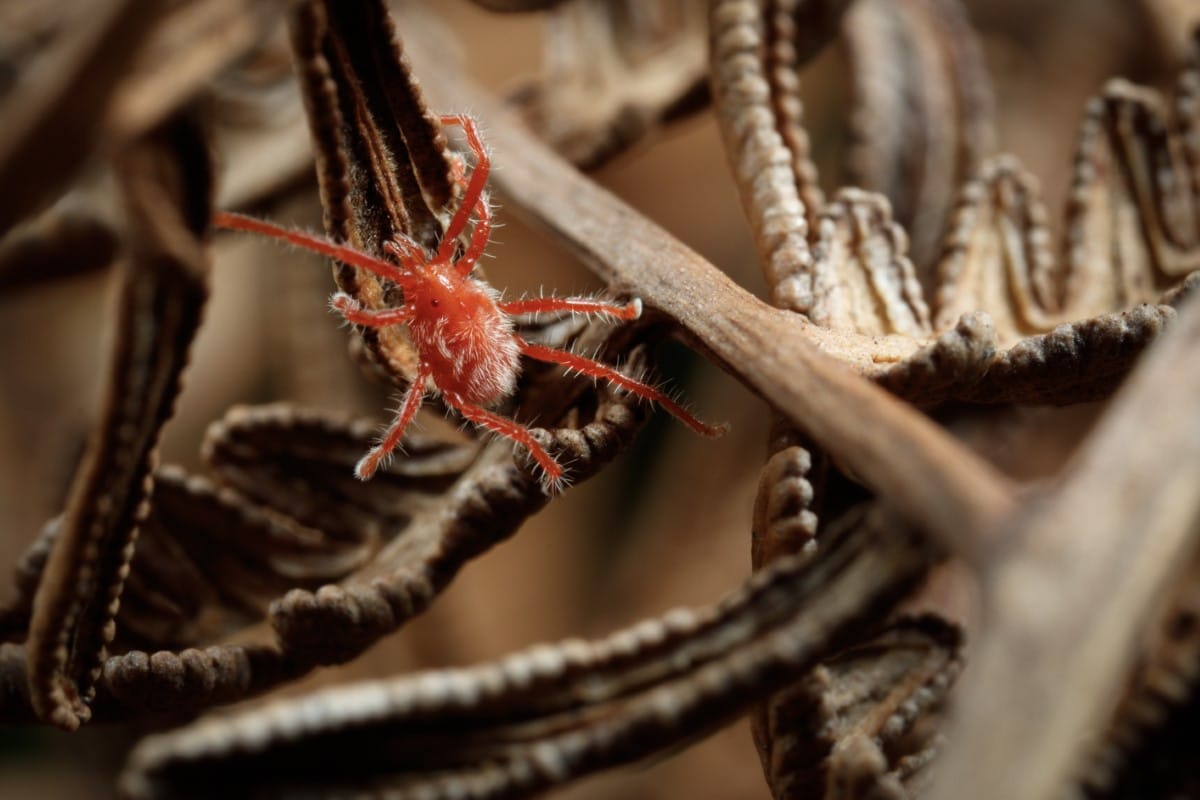
“Mite on bracken” by Ben Travaglini. Finalist.“Mites come in a dazzling variety of forms. However, few macro enthusiasts take the time to photograph them – likely because many species are both incredibly fast and tiny. I was lucky enough to capture this mite (subfamily Callidosomatinae) climbing in the dry undergrowth of Hawley Nature Reserve in northern Tasmania.”
Finalist.This photograph is of a branch submerged in tannin colored water.
Many Tasmanian plant species contain tannin compounds that help protect plants from herbivores, bacteria and fungi.
Reviving Giants: Hope for Tasmania’s Kelp Forests by Paula Andrea Ruiz Ruiz.
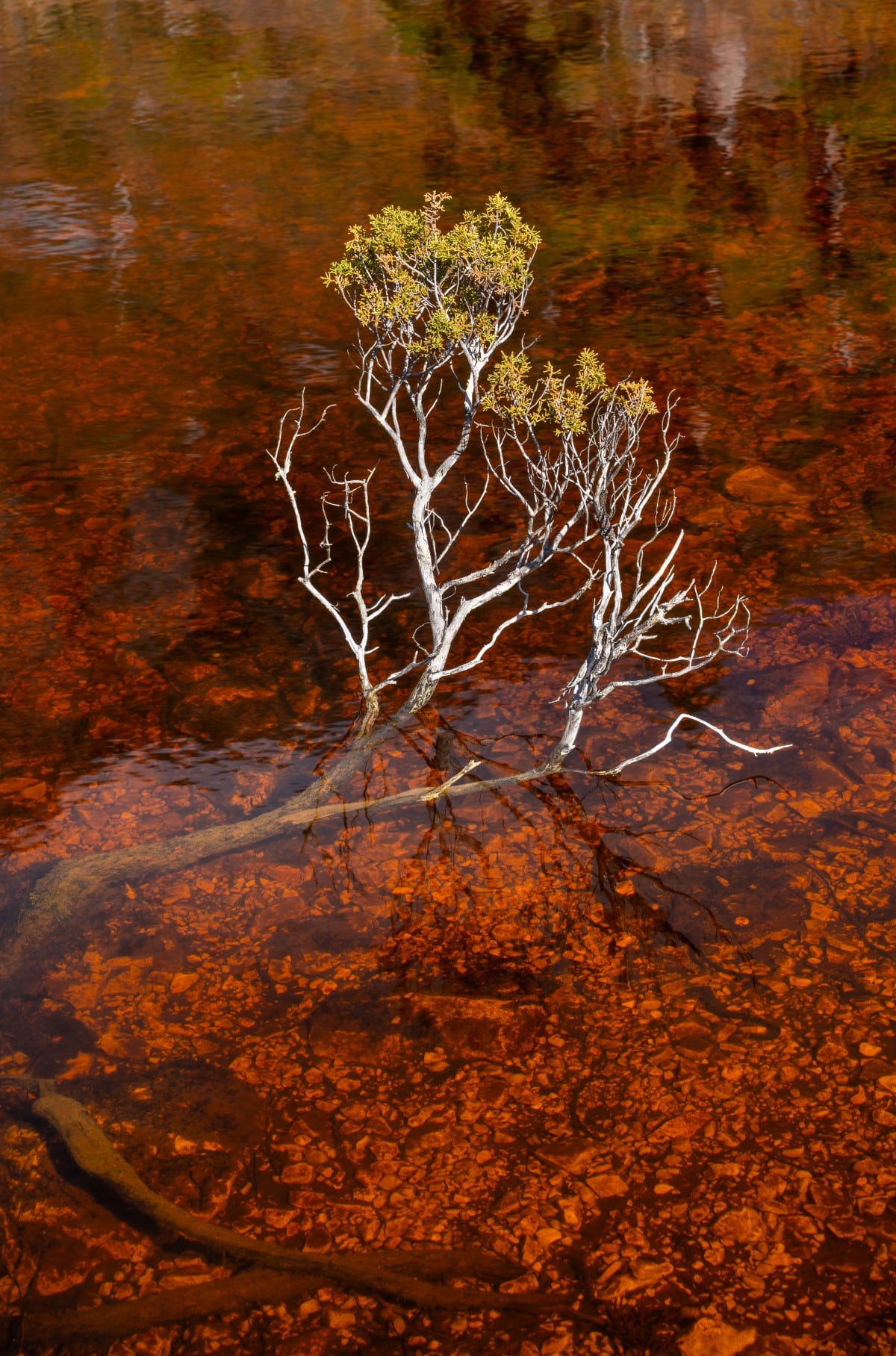
“Tannin Tarn” by Nathan Waterhouse. Finalist.“This photograph is of a branch submerged in tannin colored water. Many Tasmanian plant species contain tannin compounds that help protect plants from herbivores, bacteria and fungi. As water moves across the landscape, it acts as a solvent to leach tannin from plant matter into the water. The characteristic rich amber color is a feature of many lakes and rivers in Tasmania, particularly in the highlands and West Coast regions.”
Milky Way over Hobart City by David Nolan.
Its pervasive glow alters ecosystems, impacting wildlife behavior and habitats.
In towns and cities, it dims the brilliance of stars, limiting visibility and connection to the cosmos.
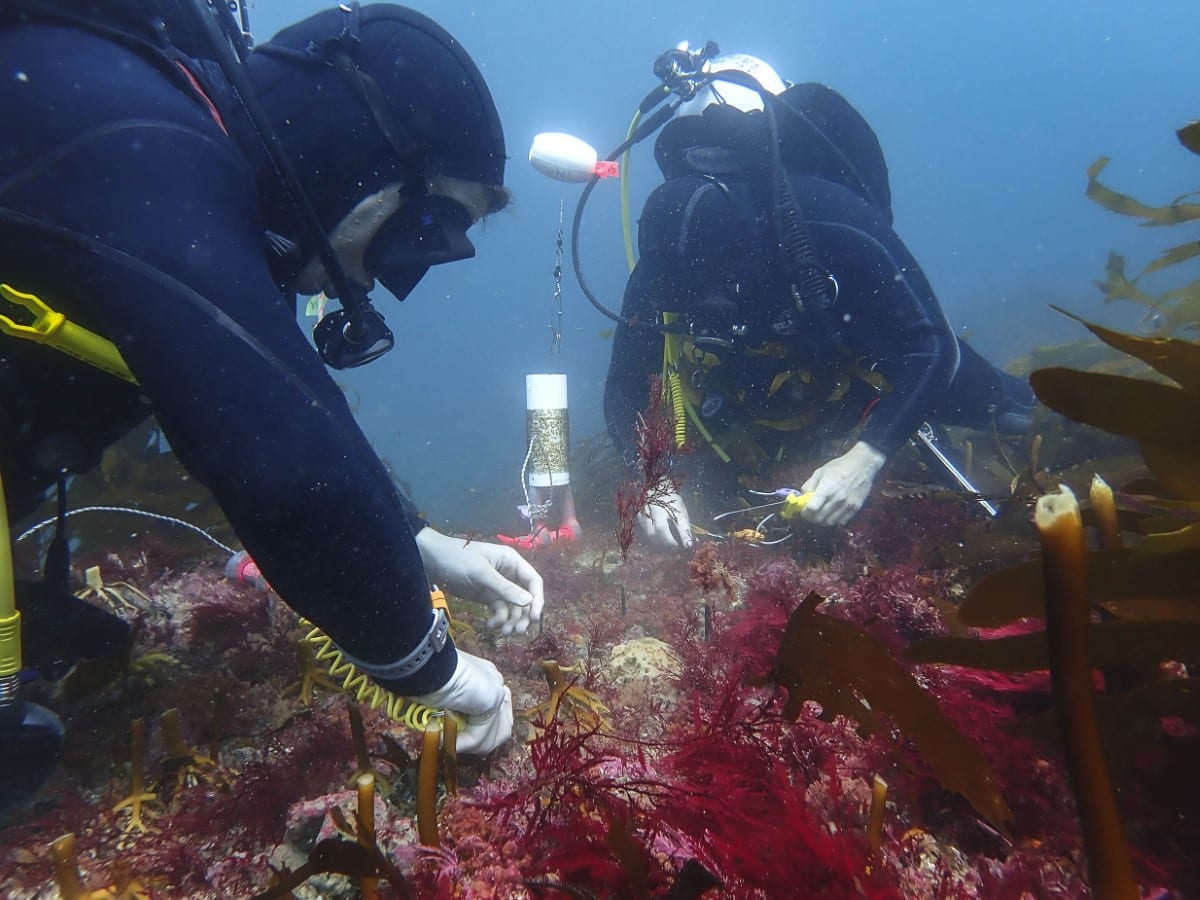
“Reviving Giants: Hope for Tasmania’s Kelp Forests” by Paula Andrea Ruiz Ruiz. Finalist.“This photo highlights the dedication of marine ecologists from the Institute for Marine and Antarctic Studies as they seed giant kelp, Macrocystis pyrifera, along various locations on Tasmania’s East Coast. Their efforts bring hope for the region’s biodiversity, as kelp provides essential shelter and food for a variety of marine organisms.”
Welcome to Dreamland by Alistair Luckman.
Finalist.The once in a lifetime event that took place over the skies of Australia on the 11th May 2024.
A solar storm comprised of protons and electrons moving past the earth incredibly fast.
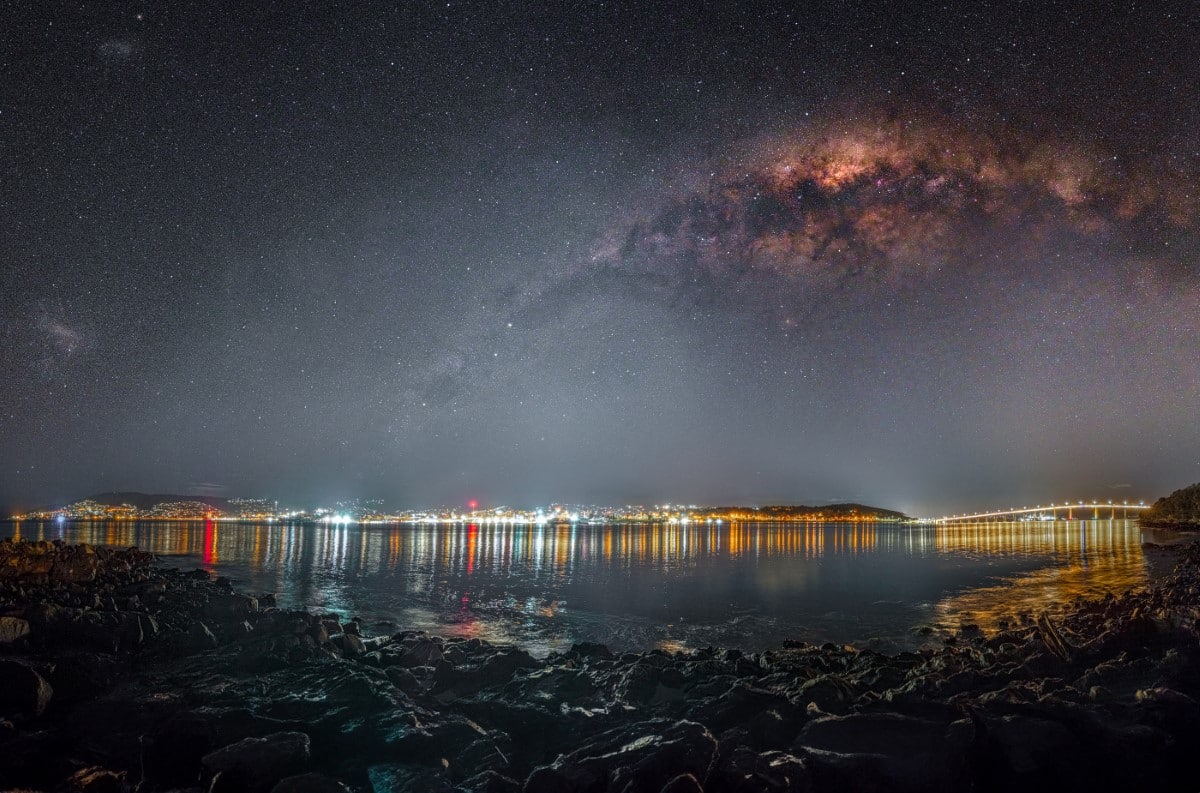
“Milky Way over Hobart City” by David Nolan. Finalist.“Light pollution disrupts the natural balance of night and day, affecting towns and cities by obscuring the celestial spectacle of the Milky Way. Its pervasive glow alters ecosystems, impacting wildlife behavior and habitats. Excessive artificial lighting not only wastes energy but also disrupts human circadian rhythms, which can lead to health issues. In towns and cities, it dims the brilliance of stars, limiting visibility and connection to the cosmos. This deprivation of natural darkness affects astronomy, education, and cultural heritage, diminishing the awe-inspiring experience of gazing at the night sky.”
Trapped in the Earths magnetic field, they move to the magnetic poles.
Forcing these atomic particles into the atmosphere, they strike atoms and molecules within.
Eddies of Time by Deon Scanlon.
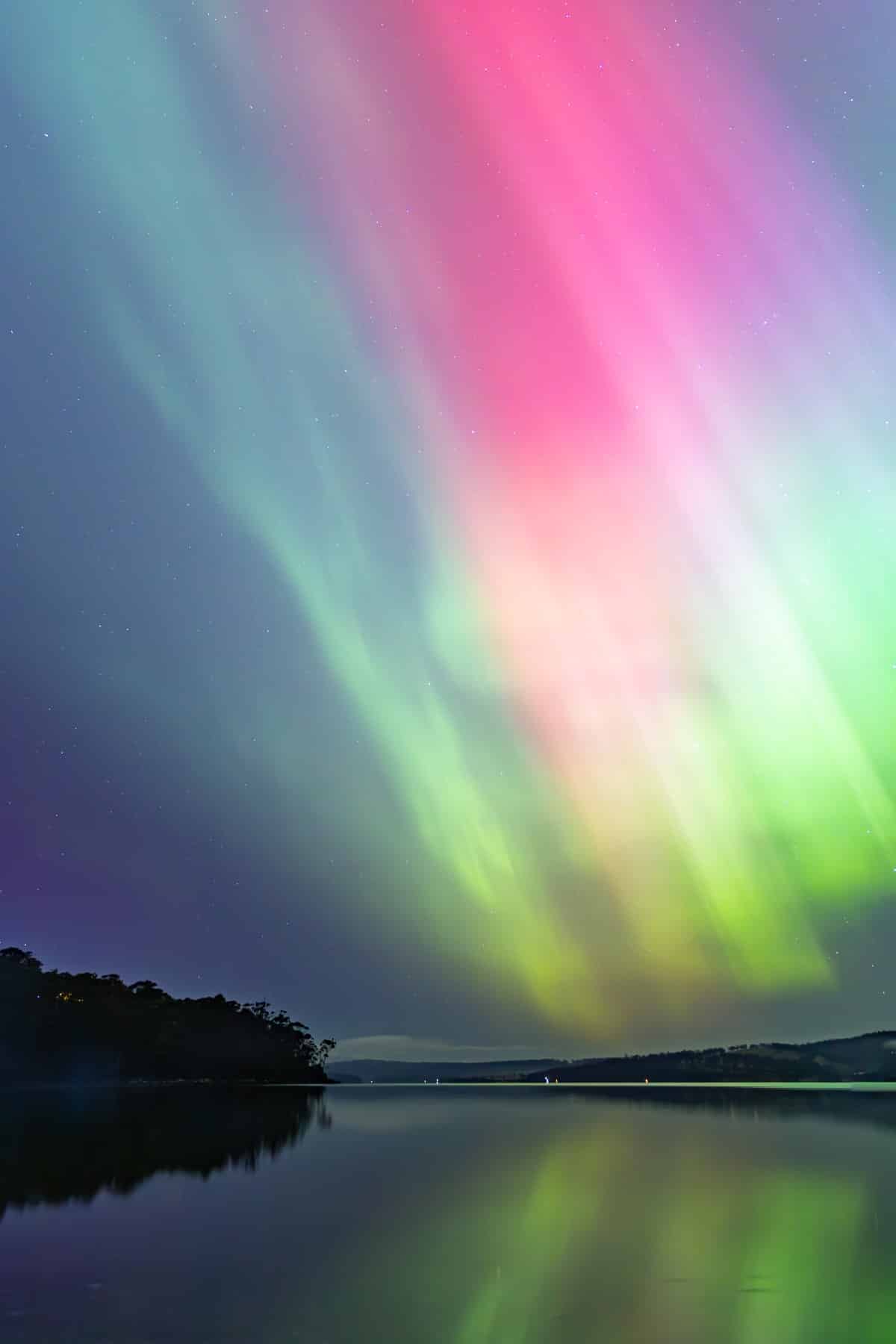
“Welcome to Dreamland” by Alistair Luckman. Finalist.“The “once in a lifetime” event that took place over the skies of Australia on the 11th May 2024. A solar storm comprised of protons and electrons moving past the earth incredibly fast. Trapped in the Earth’s magnetic field, they move to the magnetic poles. Forcing these atomic particles into the atmosphere, they strike atoms and molecules within. These particles enter a state of excitement and expel the energy by emitting light, creating spectacles like the fantastic light show we saw.”
And so the cycle continues…
Ocean warriors by Luke Brokensha.
Finalist.Calcidiscus leptoporus a coccolithophore found drifting in the Southern Ocean.
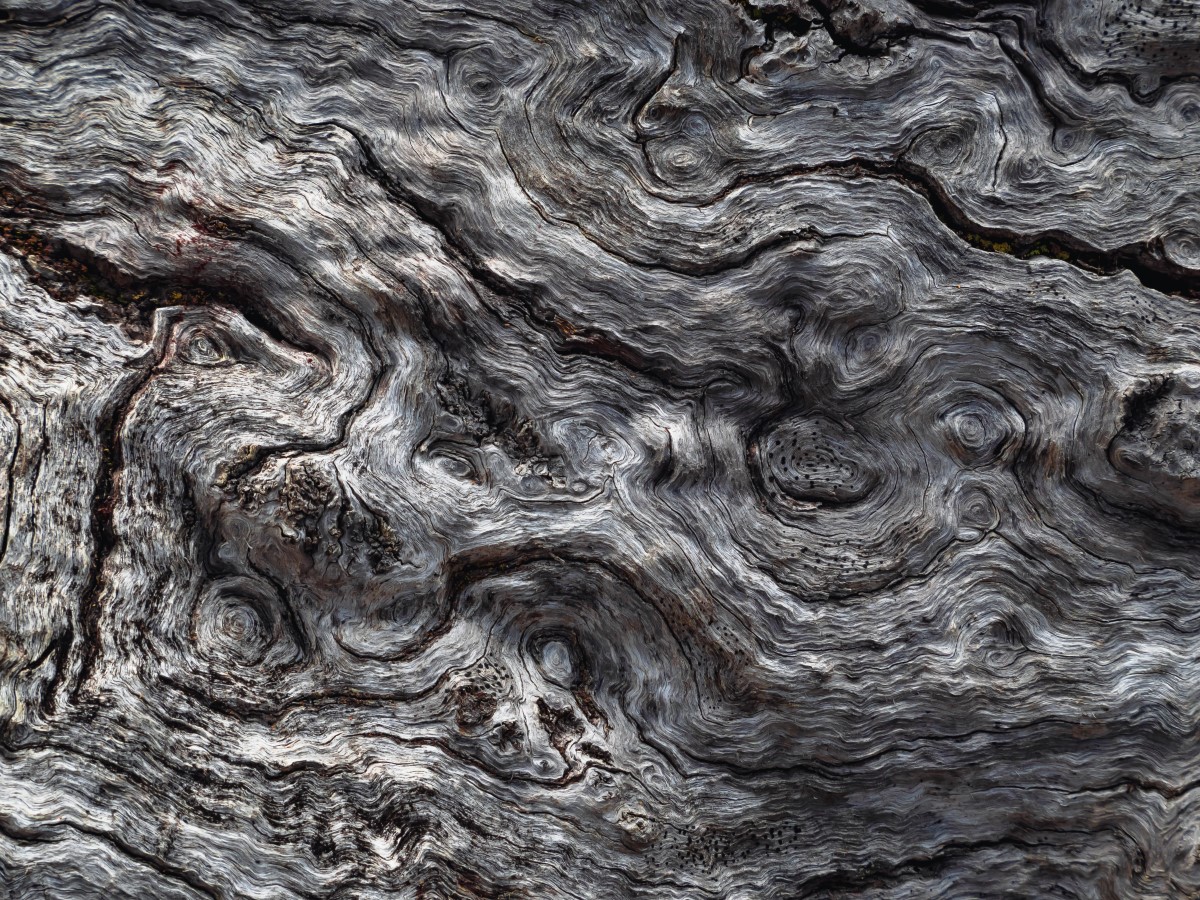
“Eddies of Time” by Deon Scanlon. Finalist.“The cracks and crevices on this once majestic Snow Peppermint (Eucalyptus coccifera) tell of the challenges of life at altitude. The struggle to grow and survive in such an ecosystem, ended due to fire, ice or simply time, is shown in the swirling eddies of this time-worn timber atop Hobart’s sentinel, kunanyi/Mt Wellington. Just as it drew from the barren environment around it in its life, this iconic Tasmanian tree gave back to the system that nurtured it, through its death. And so the cycle continues…”
Related Articles:
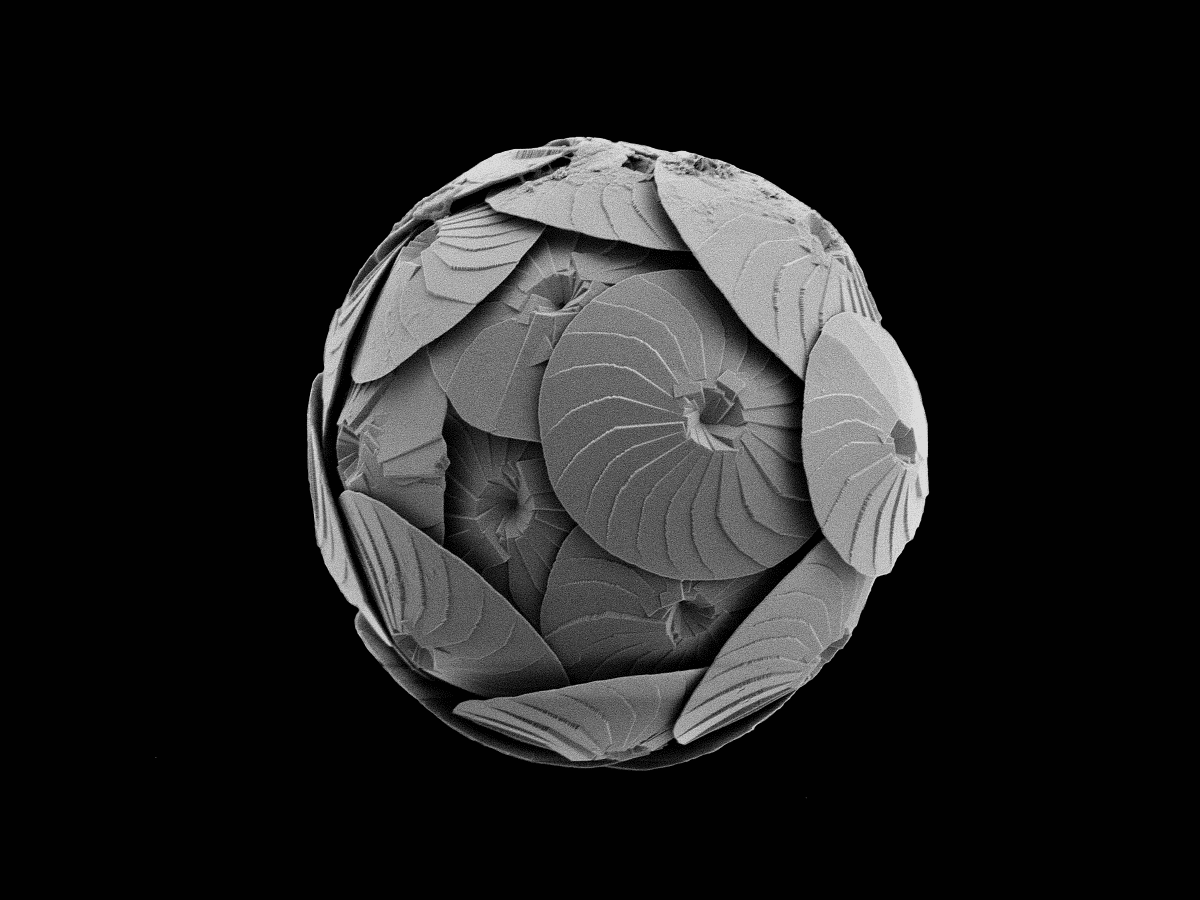
“Ocean warriors” by Luke Brokensha. Finalist.“Calcidiscus leptoporus – a coccolithophore found drifting in the Southern Ocean. Coccolithophores are single celled organisms which perform photosynthesis for the creation of energy, which in turn produces the oxygen that we breathe. They construct many intricate plates of armor – made of calcium carbonate – which they cover themselves with to protect their delicate internal cell from predation. Through their use of photosynthesis, and the production of these shell plates, they have become an exceptionally important warrior in the fight against climate change, contributing to the biological carbon pump, drawing down carbon dioxide from the atmosphere to be recycled or stored in the ocean depths. This image was taken using a Scanning Electron Microscope, from a sample collected by the Southern Ocean Continuous Plankton Recorder program (SO-CPR).”